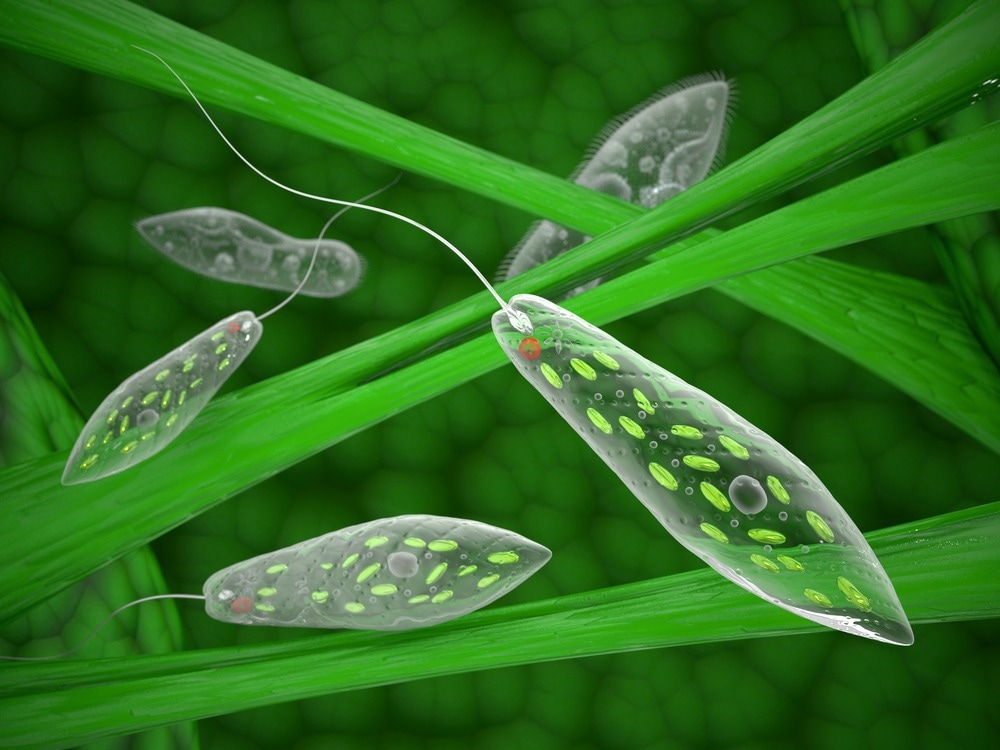Protozoa is the term applied to a group of single-celled eukaryotes that can range in size from micrometers to several millimeters, representing a genetically diverse branch of early life that emerged in the pre-Cambrian era and shares common ancestors with, though is not, a plant, animal, or fungus. Therefore, many protozoa are more closely related to extant plant, animal, or fungus species than each other, making accurate classification difficult.

Image Credit: 3d_man/Shutterstock.com
How are Protozoa Classified?
Protozoa are considered a kingdom of the eukarya domain by some modern taxonomic systems, though they have historically been classified as a phylum in the animal kingdom under the two-kingdom animal and plant system, erroneously grouped together with a large number of previously misclassified single-celled or multi-celled organisms, now considered fungi, plants, or others.
The term protozoa was coined to describe the “first animals” thought to be primitive invertebrates by researchers in the 19th century. As more plant-like single-celled organisms were identified, the term protophyta was coined, which separated out “lower plants,” organisms now known as algae, fungi, or lichen.
Later, the term metazoa was used to distinguish multi-cellular organisms that were within the protozoa phylum, now largely identified as fungi. These groups together became known as protists, where protozoa referred to those organisms that fed by heterotrophic or parasitic means, while protophyta are organisms that engage in photosynthesis. Protozoa were further sub-classified based on their method of locomotion: flagellates, ciliates, amoebae, and sporozoans, though the amoebae and flagellates were then grouped together.
Protozoa and protista are no longer considered formal taxa in many textbooks, but the terms are still widely used for convenience to refer to the phylogenetic group of eukaryotes that are not animals, plants, or fungi.
The sarcomastigophora (flagellates) and ciliophora (ciliates) are characterized by the use of flagella or cilia for locomotion, respectively, and both reproduce asexually. The ciliates, in particular, usually live in water, feeding on smaller single-celled organisms such as bacteria or algae. Both represent many unique extant species, often behaving as symbiotic, obligate, or opportunistic parasites to animals or plants.
The sporozoans are spore-forming, non-motile, single-celled organisms without flagella or cilia. They are now considered a sub-phyla of the phyla apicomplexa, a diverse group of parasitic alveolates that are obligate parasites of animals, many of which can move using a gliding mechanism.
An additional group of protozoa classified by locomotive method in recent decades is the labyrinthomorpha, single-celled organisms that produce filament networks in their surroundings to act as their primary method of movement and nutrient collection. Some are parasites of marine animals, though they are more commonly found as parasites of algae or marine plants.
Protozoa: Definition & Types of Microbes – Microbiology | Lecturio
Before the mid-2000’s, the microspora, a group of spore-forming unicellular parasites, were considered protozoa but are now classified as fungi. Similarly, myxozoa were considered protozoa, though genetic evidence has revealed that they share a common ancestor with medusozoans (jellyfish) dating back around 600 million years, and they are now classified as animals.
The Structure and Life of Protozoa
Protozoa are incredibly diverse even within their sub-groups and may or may not bear many cellular features otherwise expected. All bear a cell membrane, though its form and structure vary, and all bear a single nucleus. Many recognizable organelles exist in protozoa, such as the Golgi apparatus, mitochondria, and lysosomes. However, many additionally bear uniquely evolved organelles to fulfill a specific purpose, such as penetrating the host cell membrane in the case of parasitic organisms.
Similarly, parasitic species often evolve to lose organelles and other cellular features that are no longer required, their ancestral purpose now filled by the machinery of the host. Most protozoa, particularly those free-floating, bear temporary or permanent “mouths” for feeding and utilize food vacuoles to extract nutrition and excrete waste.
As discussed, protozoa may reproduce both sexually and asexually, depending on the specific organism in question. Both the ciliates and flagellates usually reproduce asexually, which interestingly takes place in a transverse manner in the former and a longitudinal manner in the latter, with amoebas showing no apparent preference.
In many apicomplexans the sexual cycle involves the generation of gametes that must be fertilized to form a zygote, while many parasitic species depend on movement within or between hosts to facilitate reproduction. Possibly the most well-known apicomplexan obligate parasite is plasmodium falciparum, which is responsible for causing malaria in humans.
This protozoa must enter a human host and mature in the liver before circulating in the blood, whereupon it must be transferred to the Anopheles mosquito to engage in sexual reproduction. Free-living protozoa are highly abundant around all water sources and moist environments, living throughout land soils and form a key component of the biosphere.
Last Updated: Sep 21, 2023